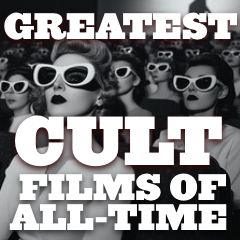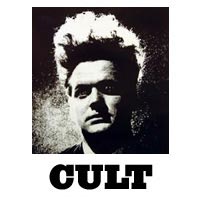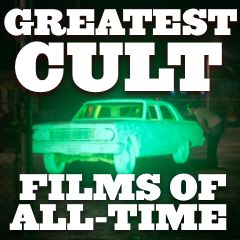
|
100+ Greatest Cult Films of All-Time |
|
Cult Films have limited but very special appeal. Cult films are usually strange, quirky, offbeat, eccentric, oddball, or surreal, with outrageous, weird, unique and cartoony characters or plots, and garish sets. They are often considered controversial, dangerous or challenging because they step outside standard narrative and technical conventions. They can be very stylized, and are often transgressive, flawed or unusual in some striking way. Cult films became increasingly popular in the 1970s. An important distinction to make is that true cult films are not just films that have a cult following. Although the Harry Potter films, the James Bond films, or other mainstream films such as Back to the Future have developed strong cult followings, that doesn't automatically make them cult films. Most cult films are obscure, independent or marginal films to begin with, have low-budgets and/or poor marketing, and didn't fare well during their original releases, but then acquired notoriety or attention over time, due to re-releases (on home video) or re-evaluation. Cult films can be either of superior quality, or they can be exploitational, cheaply-made films that lack good taste and oppose societal norms. Most cult films cut across many film genres (science fiction, horror, melodrama, etc.), although some film genres were also more prone to being cultish, such as the horror or sci-fi genres. Teen comedies more often became regarded as cult films, such as Fast Times at Ridgemont High (1982), Revenge of the Nerds (1984), Dazed and Confused (1993) and Clerks (1994), with quotable lines of dialogue, and memorable characters and scenes. A sampling of the wide range of film genres (and sub-genres) covered by cult films includes:
Many cult films featured or effectively showcased the performance of newcomers or other unknown talented actors/actresses. Sometimes, they were revolutionary, brilliant films 'before their time' (i.e., Fantasia (1940)) and not bound by the conventions of their day. Most often, obscure and cheesy cult films were made by maverick, highly individualistic film-makers with low-budget resources and little commercial marketing. And cult films were rarely, if ever, sequels, since then they would have attained mainstream appeal and widespread success. Some directors/producers were more prone to making cult films, such as Roger Corman, John Waters, Ed Wood, Quentin Tarantino, the Coen Brothers, and David Lynch, especially early in their careers, because of their individualistic perspective and style, although they could often make a conventional 'mainstream' film too (such as David Lynch's The Straight Story (1999)). More About Cult Films: Most (but not all) cult films fared poorly at the box office when first shown, but then achieved cult-film status after leaving the theaters, developing an enduring loyalty and following among rabid fans over time, often through word-of-mouth recommendations. Cult movie worshippers persuasively argue about the merits of their choices, without regard for standard newspaper or movie reviews from critics. There's no hard-and-fast rule or checklist to gauge what makes a cult film. A cult film is often designated as such "in the eye of the beholder" without fufilling any definition. It's often a matter of opinion. One viewer's cult film may not be judged the same by another viewer. The most important component of a cult film is that it elicits a fiery and intense passion in devoted fans, and may cause cultists to enthusiastically champion and become devoted to these films, leading to audience participation, fan club membership, and repetitive viewings and showings at repertory cinemas. Cult films have tremendous followings with certain groups, e.g., college campuses, 'midnight movie' crowds, independent film lovers, etc. The first 'official' midnight movie was Alexandro Jodorosky's strange El Topo (1970, Mex.) (aka The Mole) - a mystical 'spaghetti western' about a black-clad rogue gunfighter on a quest to defeat the 'four masters of the gun.' It premiered at midnight in a rundown NYC theatre (on lower Eighth Avenue) and ran seven nights a week for many months. The concept of long-playing, taboo-breaking, eccentric midnight movies designed to appeal to urban film fans was thereby born. The most quintessential rock musical cult film was the transgender The Rocky Horror Picture Show (1975) - notable for inspiring the craze of interactive 'midnight movie' screenings. The iconic film was essentially a trashy tale set in a mysterious Gothic castle with kinky extraterrestrial Transylvanian transvestites, two stranded young people (including a mostly underwear-clad Susan Sarandon), and a mad scientist. Fans of the film would line up wearing costumes and bearing props to be unleashed during the midnight showings. See more below. |
 Introduction to Cult Films |

|